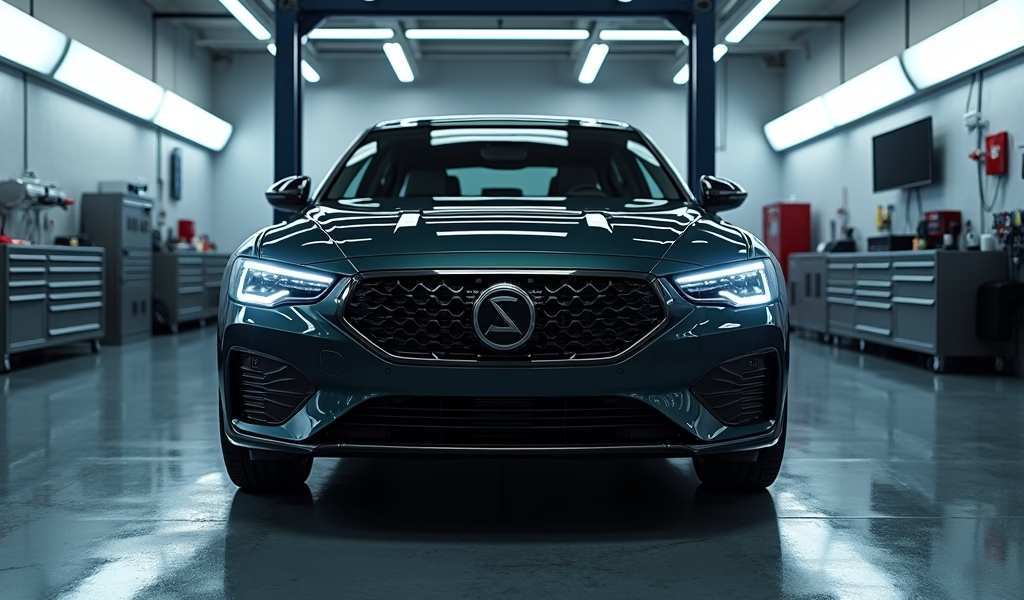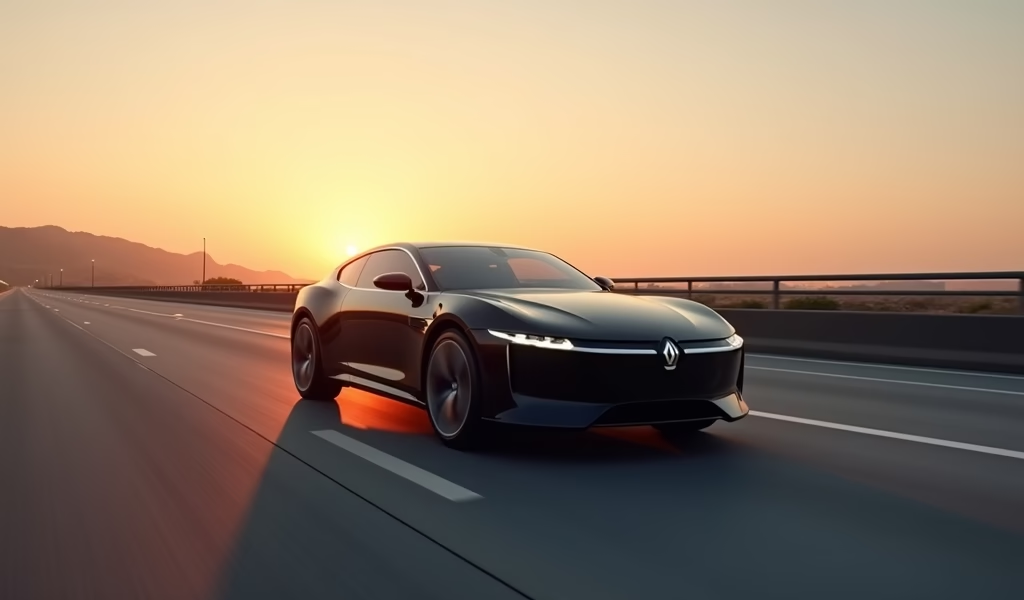Overview
This article explains cruise control technology, from basic systems that maintain vehicle speed on highways to advanced adaptive systems that automatically adjust to traffic conditions, with practical advice on proper usage, troubleshooting, and safety considerations. The guide provides six specific tips for effectively using cruise control, outlines situations when the technology should not be used (such as in adverse weather or heavy traffic), and discusses future developments including highway assist systems and vehicle-to-vehicle communication.
Table of Contents
- Understanding Cruise Control: What It Is and Why You Need It
- How Cruise Control Works: The Mechanics Behind the Magic
- Types of Cruise Control Systems: From Basic to Advanced
- Using Cruise Control Effectively: 6 Proven Tips
- Troubleshooting Common Cruise Control Issues
- When Not to Use Cruise Control: Safety Considerations
- The Future of Cruise Control Technology
- Conclusion
- Frequently Asked Questions
Understanding Cruise Control: What It Is and Why You Need It
After 20 years as an automotive technician, I’ve seen how cruise control transforms long drives from exhausting marathons to comfortable journeys. If you’ve ever felt that familiar ache in your right foot after hours on the highway, you understand why how cruise control works matters to everyday drivers.
At its core, cruise control is a system that maintains your vehicle’s speed without requiring constant pressure on the accelerator pedal. It first appeared in the 1950s but has evolved significantly since then. Modern cruise control doesn’t just make driving more comfortable—it can improve fuel efficiency by up to 14% on highways by maintaining consistent speeds.
For daily commuters and road trip enthusiasts alike, understanding this system goes beyond convenience. When properly used, cruise control reduces driver fatigue significantly, which is crucial when you’re tackling those 400-mile family visits or cross-country adventures.
Before diving into the technical details, it’s worth noting that cruise control is just one of many safety features in modern vehicles designed to make driving less taxing and more predictable. Let’s explore how this seemingly simple but sophisticated system actually works under the hood.
How Cruise Control Works: The Mechanics Behind the Magic
The fundamental principle of cruise control is surprisingly straightforward: it’s a feedback loop system that monitors and adjusts your vehicle’s speed automatically. When you activate cruise control and set your desired speed, several components work together to maintain it regardless of road conditions.
At the heart of the system is the Electronic Control Unit (ECU)—essentially the brain of your cruise control. When activated, the ECU constantly receives speed information from sensors connected to your vehicle’s driveshaft or wheel hubs. These sensors measure actual vehicle speed dozens of times per second.
When the ECU detects a difference between your set speed and actual speed—say, when you’re climbing a hill and starting to slow down—it sends signals to the throttle control. In older vehicles, this was done through a vacuum-operated servo motor physically connected to the throttle. In modern vehicles, it’s handled electronically through the throttle-by-wire system.
The feedback loop works both ways. If you’re going downhill and picking up speed, the ECU will reduce throttle input to maintain your set speed. Some advanced systems even engage the transmission to downshift or apply light braking pressure when needed.
According to research from the Society of Automotive Engineers, this constant adjustment happens so seamlessly that most drivers never notice the hundreds of tiny throttle adjustments being made during a typical highway cruise.
If you drive an automatic transmission vehicle, the integration is particularly smooth since the transmission and cruise control systems communicate directly. However, cruise control works perfectly well with manual transmissions too—you’ll just need to manage your own gear changes while the system handles the throttle.

Types of Cruise Control Systems: From Basic to Advanced
Not all cruise control systems are created equal. As a mechanic, I’ve worked with everything from the simplest mechanical systems to cutting-edge adaptive technologies. Understanding which type you have affects how you’ll use it and what it can do for you.
Conventional Cruise Control
This is the original system found in many older vehicles and budget-friendly modern cars. Conventional cruise control maintains a set speed but requires driver intervention when traffic conditions change. It’s perfect for open highways with minimal traffic but less helpful in variable conditions.
The hardware is relatively simple: a speed sensor, vacuum actuator or electronic motor, and control module. These systems typically feature buttons for Set, Resume, Cancel, and +/- speed adjustments, usually located on the steering wheel or a dedicated stalk.
Adaptive Cruise Control (ACC)
The game-changer in cruise technology, Adaptive Cruise Control uses radar or cameras to monitor the distance between your vehicle and the one ahead. When traffic slows down, your vehicle automatically reduces speed to maintain a safe following distance. When traffic clears, it returns to your preset speed.
The technical components include:
- Radar sensors (typically mounted in the front grille)
- Forward-facing cameras (usually near the rearview mirror)
- Advanced ECU with distance-calculation algorithms
- Integration with the braking system
Many luxury vehicles and increasingly even mid-range models feature ACC, which according to Insurance Institute for Highway Safety research, can reduce rear-end collisions by up to 40% when properly used.
Predictive Cruise Control
The newest evolution incorporates GPS and mapping data to anticipate road conditions ahead. For example, if approaching a sharp curve or steep hill, predictive systems will proactively adjust speed before you reach the feature. Some premium systems even use cloud-connected traffic data to optimize speed for fuel efficiency.
These sophisticated systems can increase fuel economy by an additional 5-10% over standard cruise control by anticipating terrain changes and avoiding unnecessary acceleration/braking cycles.
Using Cruise Control Effectively: 6 Proven Tips
After guiding hundreds of customers on optimal cruise control use, I’ve developed these six proven tips to help you get the most from your system while ensuring safety remains the top priority.
1. Master the Activation Sequence
Different vehicles have slightly different activation methods, but most follow this pattern:
- Accelerate manually to your desired speed
- Press the “Set” or “Set/Accel” button when you reach that speed
- Remove your foot from the accelerator gently (don’t abruptly lift off)
- The system will maintain your current speed
For optimal engagement, activate cruise control when your engine is already operating efficiently—usually between 45-75 mph depending on your vehicle. This maximizes the fuel economy benefits.
2. Use Small Incremental Adjustments
Most systems allow you to make fine speed adjustments (typically 1 mph) with a single press of the +/- buttons. For larger adjustments, you can either hold the button down or temporarily deactivate cruise, accelerate manually, and reset.
Small, incremental adjustments are gentler on your drivetrain and typically more fuel-efficient than large changes. This is especially true in vehicles where the difference between automatic and manual transmission control logic affects how aggressively the vehicle responds to cruise commands.
3. Leverage the “Resume” Function Wisely
The “Resume” button returns to your previously set speed after you’ve temporarily disengaged cruise control (such as after braking). Be cautious when using this feature if traffic conditions have changed—your vehicle will accelerate back to the previous set speed, which might be too fast for current conditions.
Pro tip: On long road trips with occasional stops, the resume function saves you from having to remember and reset your preferred cruising speed each time.
4. Anticipate Hills and Curves
Standard cruise control maintains throttle position, not speed, which means you’ll lose speed on inclines and gain it on declines. For better control:
- Manually add a little speed before starting uphill climbs
- Reduce your set speed before steep downhill sections
- Temporarily deactivate when approaching sharp curves
With adaptive systems, you’ll still need to be proactive about significant terrain changes, though these systems generally handle minor variations well.
5. Maintain Proper Following Distance
With standard cruise control, you must manually manage following distance. A good rule is the 3-second rule: pick a stationary object the vehicle ahead passes, then count seconds until you reach it. Adjust speed if less than 3 seconds.
With adaptive systems, you can typically adjust the following distance using dedicated buttons. I recommend starting with the maximum distance setting and adjusting based on traffic conditions and personal comfort.
6. Perform Regular System Checks
Like any vehicle system, cruise control benefits from occasional testing:
- Test all functions (Set, Resume, Cancel, +/-) monthly
- Verify the system disengages immediately when you tap the brake
- If adaptive, clean sensors periodically (especially in winter or dusty conditions)
If you notice any delay, erratic speed maintenance, or warning lights, have the system diagnosed promptly. Most cruise control issues are relatively simple fixes when caught early.
Troubleshooting Common Cruise Control Issues
In my years in the service bay, I’ve diagnosed hundreds of cruise control problems. Here are the most common issues I see and their likely causes:
System Won’t Engage
If your cruise control refuses to activate, check these common culprits:
- Blown fuse (check your owner’s manual for location)
- Faulty brake light switch (cruise won’t engage if it thinks you’re braking)
- Damaged control buttons on steering wheel
- Vehicle speed too low (most systems require 25-30 mph minimum)
The brake light switch is often the hidden culprit—if your brake lights stay on continuously, your cruise control won’t engage. This is an intentional safety feature.
Speed Fluctuations
If your cruise control engages but can’t maintain a steady speed, consider:
- Dirty or failing speed sensors
- Vacuum leaks (in vacuum-operated systems)
- Transmission issues affecting throttle response
- Clogged fuel filter restricting flow at higher demand
Modern vehicles store diagnostic codes for cruise control issues, which can be retrieved with a scanner tool. Most auto parts stores offer free code reading if you don’t have access to a scanner.
Adaptive System False Braking
If your adaptive cruise control brakes unnecessarily:
- Check for debris or snow covering front sensors/cameras
- Verify sensor alignment (especially after minor front-end collisions)
- Update system software (ask your dealer about available updates)
This is becoming more common as adaptive systems proliferate. Sometimes a simple sensor cleaning solves mysterious false braking issues.

When Not to Use Cruise Control: Safety Considerations
As convenient as cruise control is, there are situations where using it creates unnecessary risks. Being a responsible driver means knowing when to rely on your own foot instead of automation.
Adverse Weather Conditions
Never use cruise control in rain, snow, ice, or even on wet roads. When your vehicle hydroplanes or slips on a slick surface, cruise control will continue trying to maintain speed by applying power—exactly the opposite of what you need in a skid situation.
According to accident analysis experts, this combination of cruise control and wet roads has contributed to numerous accidents that might have been avoided with manual throttle control.
Heavy Traffic
Standard cruise control isn’t designed for stop-and-go traffic or situations requiring frequent speed adjustments. Even with adaptive systems, heavy congestion demands your full attention and manual control.
The constant activation/deactivation in heavy traffic can actually increase stress rather than reducing it, defeating the purpose of using cruise control in the first place.
Winding Roads
Cruise control works best on straight, relatively flat highways. On winding roads, you should be actively managing your speed through each curve. Maintaining a constant speed through varying curves isn’t just uncomfortable—it can be dangerous.
Your vehicle handles best when you slightly reduce speed before entering a curve and then gradually accelerate through and out of it—something cruise control can’t do effectively.
When You’re Fatigued
While cruise control reduces leg fatigue, it can actually worsen mental fatigue or drowsiness by making driving more passive. If you’re already feeling sleepy, the reduced physical engagement of cruise control might make it harder to stay alert.
In these situations, it’s better to take a break or switch drivers rather than relying on cruise control to compensate for fatigue.
The Future of Cruise Control Technology
The evolution of cruise control shows no signs of slowing down. As we look toward the future, several exciting developments are already appearing in high-end vehicles and will likely become standard features in the coming years.
Fully Integrated Highway Assist Systems
The latest generation of cruise technology integrates with steering systems to provide limited self-driving capability on highways. These systems combine adaptive cruise control with lane-keeping assistance to handle both speed and steering within clearly marked highway lanes.
These aren’t autonomous driving systems—they still require hands on the wheel and eyes on the road—but they represent a significant step toward reducing driver workload during highway travel.
Traffic Jam Assist
A specialized form of adaptive cruise control designed specifically for low-speed congestion, traffic jam assist systems can handle the stop-and-go tedium of heavy traffic, including complete stops and restarts when traffic moves again.
This technology is particularly valuable for commuters in urban areas where traditional cruise control has limited utility due to traffic patterns.
Vehicle-to-Vehicle Communication
Perhaps the most revolutionary development is the integration of cruise control with V2V (vehicle-to-vehicle) communication systems. These allow equipped vehicles to share speed, position, and intent data, enabling cruise systems to anticipate traffic changes before they’re visible to sensors.
For example, if a vehicle ahead brakes suddenly, your cruise control could receive that information and begin slowing before your own sensors detect the deceleration, potentially preventing accidents.
As these technologies mature and become more affordable, we’ll see them filtering down from luxury vehicles to everyday models, continuing the trend of making driving safer and more convenient for everyone.
Conclusion
Understanding how cruise control works goes far beyond simply knowing which button to press. From the basic feedback mechanisms that maintain your speed to the sophisticated radar and camera systems in modern adaptive setups, cruise control represents one of the most useful and continually evolving driver assistance technologies.
When used appropriately—on suitable roads, in good conditions, and with proper technique—cruise control reduces fatigue, improves fuel economy, and can make long drives significantly more comfortable. The six tips we’ve covered will help you maximize these benefits while avoiding common pitfalls.
Remember that even the most advanced cruise control systems are driver assistance features, not replacements for an alert, engaged driver. They’re tools that work best when you understand their capabilities and limitations.
Whether you’re cruising across state lines on a summer road trip or just making your daily commute more comfortable, mastering your vehicle’s cruise control system is a skill that pays dividends in comfort, safety, and efficiency. And as these systems continue to evolve, staying informed about your vehicle’s specific capabilities will only become more important.
Frequently Asked Questions
Can cruise control improve gas mileage?
Yes, cruise control typically improves fuel efficiency by 7-14% on highways by maintaining steady speeds and avoiding unnecessary acceleration. The efficiency gains are most noticeable during long highway trips with minimal traffic.
Is it bad to use cruise control in the mountains?
Standard cruise control isn’t ideal for mountainous terrain as it struggles with steep grade changes and may cause excessive speed on descents. Adaptive or predictive cruise control systems handle mountains better but still require driver attention.
Does cruise control work in all gears?
Cruise control generally works in all forward gears but operates most efficiently in higher gears. Most automatic transmissions will select the appropriate gear for cruise operation, while manual transmission vehicles require the driver to select a suitable gear.
Why does my cruise control turn off by itself?
Cruise control automatically disengages when you tap the brakes, press the clutch, shift to neutral, or if vehicle stability control activates. It may also disengage if the system detects wheelspin or if vehicle speed drops below the minimum threshold (typically 25-30 mph).
Can I use cruise control in the rain?
No, cruise control should never be used on wet, icy, or slippery roads. If your vehicle hydroplanes while cruise control is engaged, the system will continue applying power to maintain speed, potentially causing loss of control.

